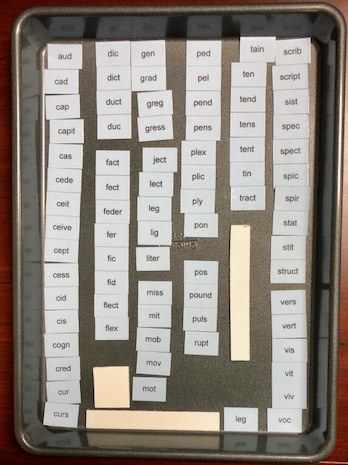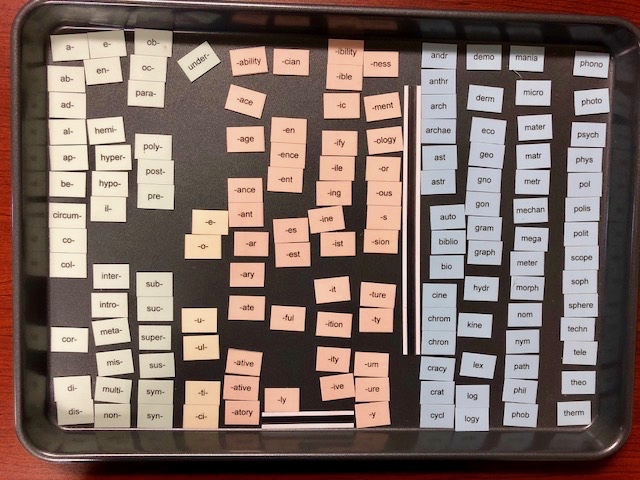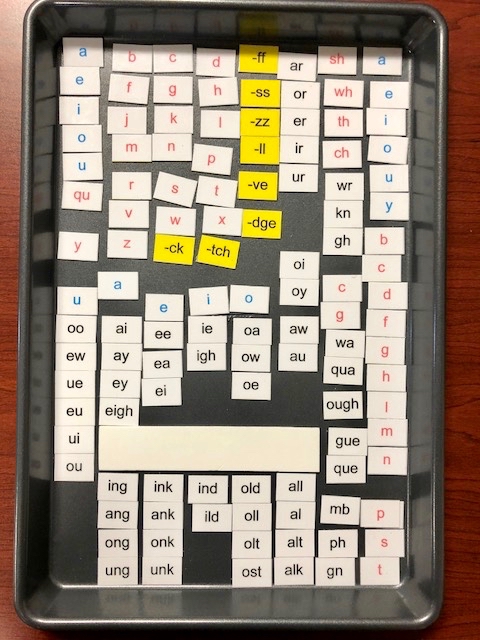Organizing the Phonics and Morphology Magnets
You have your Phonics and Morphology Magnets, and keeping track of 360 tiles so you can use them effectively (and efficiently) is a critical task. If you already have them organized, this post isn’t for you. But if you want to see how one experienced tutor (and co-creator of this product) organizes them, read on…
The tiles are magnetic, so Cathy uses steel cookie sheets. They are widely available commodity items. Just make sure to get the steel ones — magnets don’t stick to the aluminum cookie sheets.
The tiles are color coded. The Latin and Greek colors are fairly close, so Cathy puts them on different sheets. Here is a picture of the Latin roots on their own cookie sheet:

The prefixes, suffixes, and Greek roots are on another tray:

This is one way to organize the prefixes, suffixes, and Greek roots.
The rest of the tiles–the phonics tiles–are on their own cookie sheet:

Organize the phonics components of the morphology magnets in a cookie sheet, or other magnetic material
Cathy bought a set of three nesting cookie sheets, so it is convenient to nest them inside each other. They travel best horizontally. If you have a large envelope or plastic bag, you can put the cookie sheets inside so that if a tile shakes loose you won’t lose it. You can also use plastic wrap in a pinch.
